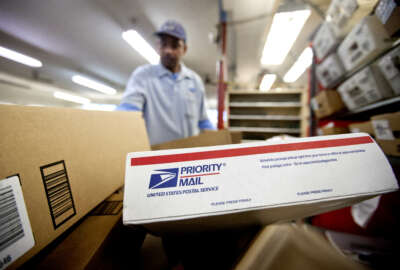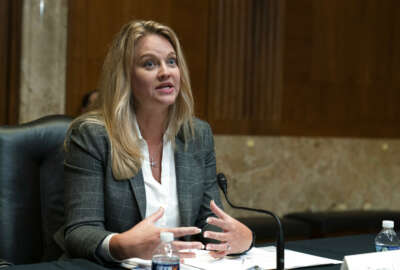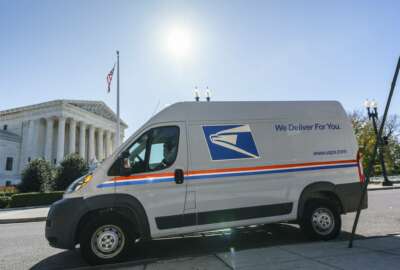USPS plans to move ahead with mail rate hike over lawmakers’ objections
The Postal Service is moving ahead with plans to raise rates later this summer, after lawmakers asked the agency to postpone the increase.
The Postal Service is moving ahead with plans to raise rates later this summer, after lawmakers asked the agency to postpone the increase.
Once the new rates go into effect, USPS told lawmakers, mail volume will decrease annually by 2.3% but will bring in $1.7 billion in additional revenue — a more than 4% increase from what the agency currently brings in.
Peter Pastre, USPS vice president of government relations and public policy, told Rep. Glenn Grothman (R-Wis.) that the price hike was an “essential component of our plan to achieve fiscal solvency.”
First-class mail, the agency’s most profitable product, saw a decline in recent years that only accelerated under the COVID-19 pandemic.
First-class mail volume declined by about 2.9% every year from 2014 to 2019, but fell by 4.8% in 2020, and dropped by 4.6% as of May 2021.
“Generally, it appears that at least in the short-term, market-dominant mail is recovering from the impacts of the pandemic, but the preexisting declines will continue,” Pastre wrote.
Grothman, along with Rep. Gerry Connolly (D-Va.) led House colleagues in asking Postmaster General Louis DeJoy to postpone the rate increase until January 2022.
The lawmakers warned DeJoy that raising prices at a time when USPS revenues are increasing, and when small businesses are still reeling from the pandemic’s economic impact, would be “premature and counterproductive.”
If USPS postponed its rate hike, as lawmakers proposed, the agency expects it would avoid driving away 880 million pieces of mail from its total volume over a year, but would also lose out on collecting an additional $750 million in revenue.
The rate increase stems from the Postal Regulatory Commission’s final rule last November that kept a price cap on market-dominant products like first-class mail, but based the cap on changes in mail density and USPS pre-funding retiree health benefits. The final rule concluded a 10-year review of USPS mail rates.
The PRC, meanwhile, also granted its final approval for USPS to institute the price increase. The commission, in a filing Monday said that higher prices proposed by USPS were consistent with commission regulations, directives and orders.
On Aug. 29, USPS will raise the price of a first-class stamp from 55 cents to 58 cents and will generally raise mail products by about 6.8%, while magazines, newspapers and catalogs would see an 8.8% price increase.
USPS raised the price of a first-class stamp from 50 cents to 55 cents in January 2019, the biggest price increase in the agency’s history.
USPS raised prices on its “market-dominant” mail products in January by 1.8% to keep up with the rate of inflation.
Pastre, however, said the new rate-setting authority from PRC was a long-overdue step to allowing the agency to adjust to market conditions.
“While we do not believe the new rules went far enough, they provide much needed additional pricing authority to enable the Postal Service to achieve our goals as laid out in the ‘Delivering for America’ plan, and help us to achieve the self-sufficiency that is required under the law,” he wrote.
Copyright © 2024 Federal News Network. All rights reserved. This website is not intended for users located within the European Economic Area.
Jory Heckman is a reporter at Federal News Network covering U.S. Postal Service, IRS, big data and technology issues.
Follow @jheckmanWFED






